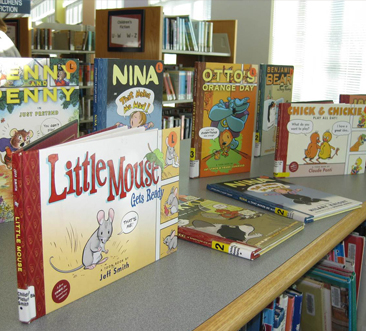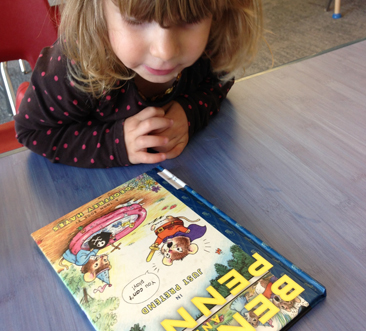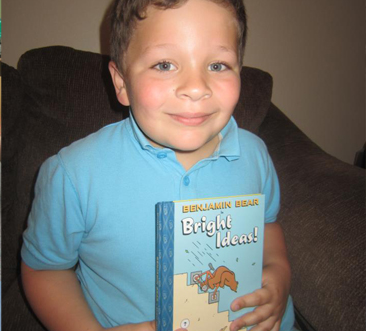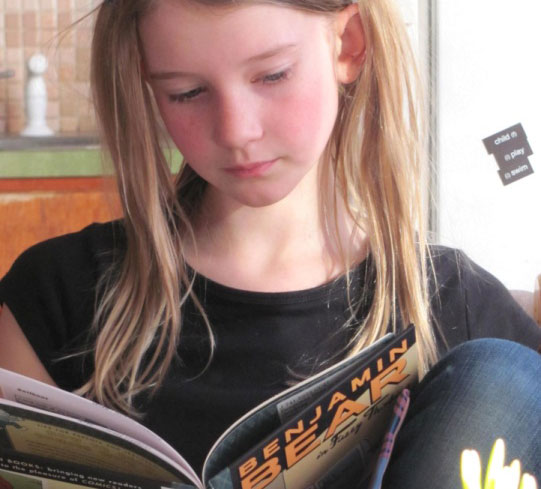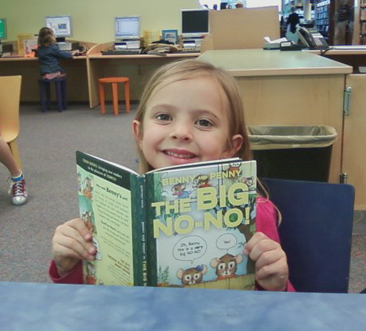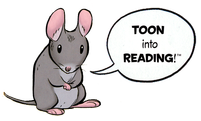Why Use Comics in the Classroom?Teachers across the country are using TOON Books to help teach the Common Core State Standards. With study after study extoling the virtues of comics in the classroom, children’s comics is now one of the fastest growing genres in all of book publishing.
Why do our comics work so well in the classroom? Here’s the shortlist: 1. Kids Love Comics! Children are naturally drawn to the details in the pictures, which make them want to read the words. With original stories, quirky characters, and plenty of age-appropriate wit, TOON Books enthrall both the emerging and reluctant reader. Comics beg for repeated readings and kids are able to enjoy complex stories with a rich vocabulary. 2. Leveled Comics for Successful Independent Reading TOON Books are carefully constructed to offer just the right level of support and challenge for each of our three beginning reading levels. Every book has been vetted by literacy experts to ensure the language and narratives are appropriate for independent readers. With nearly 30 unique titles, every child in grades K-3 can find a TOON Book they’ll enjoy at their “just right” independent reading level. 3. Grade-Level Exemplar Text for the CCSS Teachers are using TOON Books as the grade-level exemplar text to teach the Common Core Standards. Every title is carefully designed and constructed to offer the complexity, quality, and range so that teachers can then springboard into meaningful instruction about specific standards, including inferencing, predicting, envisioning, making connections, finding the main idea, and key details. Our FREE Common Core Guides are customized for each title and highlight specific examples for teachers to use in the classroom to help bring the Common Core Standards to life in a fun and engaging way for kids. 4. Multi-Modal Language and Decoding Skills Comics offer an expanded array of supports to assist readers in decoding text and comprehending narratives. According to Stanford Professor Emeritus Barbara Tversky, “Comics are similar to face-to-face interactions, in which meaning is derived not solely from words, but also from gestures, intonation, facial expressions and props. Comics are more than just illustrated books, but rather make use of a multi-modal language that blends words, pictures, facial expressions, panel-to-panel progression, color, sound effects and more to engage readers in a compelling narrative." 5. Extensive Pre-Reader Supports If you’ve ever watched a toddler “pretend-read” a comic you likely won’t need further evidence on the virtues of comics for both pre-K and struggling readers. The Canadian Council of Learning cites curriculum developer Tracy Edmunds: “Even before children are ready to read text, comic books can give them practice in making meaning from material printed on a page, tracking left to right and top to bottom, interpreting symbols, and following the sequence of events in a story. Comic books have been shown to be useful for beginning readers, since the reduced text makes the language manageable for new readers. Comics expand children’s vocabulary by giving contexts to words that the child would not normally have been exposed to." 6. Visual Literacy Skills and Informational Text We live in an increasingly visual culture where we must regularly interpret and process visual clues whether on screens, in print, or in our environment. Comics develop a child’s visual literacy skills, which are essential for reading diagrams, maps, and graphs as required in the Reading Informational Text standards. 7. Comics and Student Activities With the many pedagogical underpinnings surrounding comics, teachers have found it easy to engage young minds in the pleasure of reading. This in turn leads to kids' desire to participate in activities like creative writing, reader’s theater, and storytelling. TOON Books has designed specific Lesson Plans and Student Activity Sheets that are customized for every title. 8. Comics and Loving to Read We started this imprint to bring the pleasure of comics to more young people. As Ian Chipman of Booklists attests, “TOON Books are a literacy tool to teach kids to not only read, but also love to read.” And yes, this says it all. |
Educators on T00N Books in the Classroom...
|
"TOON Books is easily one of the most interesting lines of children’s literature being published right now. The concept is simple–these are easy readers, written with a limited vocabulary, in a comic book format, complete with panels and word balloons, created by some of the masters of comics, like Art Spiegelman (Pulitzer Prize-winning creator of MAUS) and Jeff Smith (creator of Bone)...The way the best comics combine art with the written word to capture the readers interest has special magic to children--even children who otherwise shy away from books. And while I think it would be great to include some kid-appropriate superhero fare in the classroom library--that’s not what TOON Books is about. These are stories about talking animals, animated toys, kids going to school--a wide range of classroom-appropriate topics. The creators are great artists, renowned in their field, creating books with the express purpose of getting kids into reading. The stories are simple and charming, the illustrations are beautiful, and did I mention that each book has an accompanying, age-appropriate lesson plan available at the TOON Books website? Even if you’re not a comic fan, you owe it to yourself to check this one out."
--Brenley MacLeod, Librarian "Just take a look at how TOON books differentiates their easy reading graphic titles. Like many beginning reader series, they’re divided into three levels. But here’s the difference - we’re not left to wonder what criteria was used to derive those levels. Surprise, surprise! TOON Books tells us! Each book has a listed Lexile Level, Guided Reading Level, and Reading Recovery Level...Surely all librarians can appreciate having the tools needed to appropriately shelve, catalog, and recommend our easy reader collections. This is how it should be done, folks!" --Shelf-Employed |
"Schools around the country are using comic books to teach reading and other subjects. The Maryland State Department of Education has developed a comic book curriculum using classic Disney comics. After a successful test, it is being used in about 200 classrooms, and continues to expand. The state has introduced a new series of original comic books, TOON Books, in first and second grade. The series was created by Françoise Mouly, art editor of The New Yorker magazine, and her husband, Art Spiegelman, a prizewinning comics artist...Comics help introduce kids to importat features of fiction, such as narrative structure, tone and character development. They also include context clues for difficult words."
--TIME for Kids "TOON Books are really a new generation of books for a new generation of young, emerging readers who are growing up in a very visual environment. These graphic novels are more than just stories translated into a comic format. They are organic, with simple dialogue and engaging illustrations created by some of the best writers and artists in the business…[TOON Books] help young readers as they begin the process of learning to navigate the page and decipher text." --Michele Gorman, Librarian 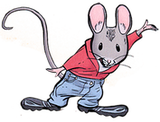
"These books provide fun reading for younger children while also introducing them to the graphic novel format. They’re great for any library collection, and especially fine for school libraries."
--Kat Kan, Librarian |

